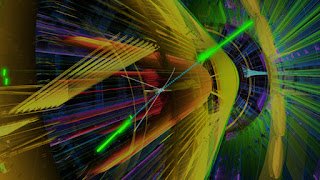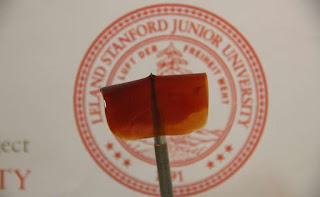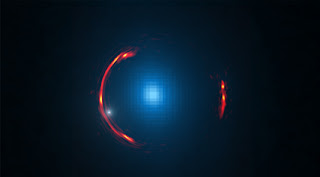 |
| Image Source: Second Link below |
Topics: Laser, Optical Physics, Photonics, Physics, Politics, Research
Omid Kokabee was a PhD student and researcher at the University of Texas, Austin in Laser Physics until his capture in 2011 during a family visit to Iran, and wrongful conviction by an authoritarian Iranian court. His health is fading; cancer claiming his right kidney. It was removed finally, but he's still in considerable pain and in real danger of dying. Instead of thinking of his scientific contributions to the US and the world at large, I fear our letting him languish this long is due to his being "other."
As much as I think the Iranian nuclear arms deal is a good thing - avoiding species extinction always is - an individual like Omid Kokabee is going through his own personal extinction albeit in a kind of psychopathic slow-motion.
Omid Kokabee was awarded the Andrei Sakharov Prize from the American Physical Society for “his courage in refusing to use his physics knowledge to work on projects that he deemed harmful to humanity, in the face of extreme physical and psychological pressure.” He has also been suffering from a number of serious health problems that have not been treated.
The timing of the petition delivery is critical: following a concerted effort on his behalf by a number of organizations and thousands of activists around the world, Iran’s Supreme Court recently vacated the ten-year sentence and is now going to review the case against Omid Kokabee. October 28 also marks the official presentation to the United Nations of the report of the UN Special Rapporteur on the Situation of Human Rights in Iran, Dr. Ahmed Shaheed. Iran’s human rights record will also be closely scrutinized when its Universal Periodic Review in the UN Human Rights Council in Geneva is conducted starting October 31.
The delegation delivering the petitions to the Iran UN Mission is calling for Omid Kokabee to be immediately and unconditionally released so that he can receive urgent medical treatment for his numerous and severe health problems.
The letter to Iran’s Supreme Leader calling for the release of Omid Kokabee is endorsed by the following 31 Nobel laureates in physics: Leon Neil Cooper (1972), Brian David Josephson (1973), Anthony Hewish (1974), Burton Richter (1976), Samuel Chao Chung Ting (1976), Philip W. Anderson (1977), Arno Allan Penzias (1978), Sheldon Lee Glashow (1979), James Cronin (1980), Nicolaas Bloembergen (1981), Klaus von Klitzing (1985), Jack Steinberger (1988), David. M. Lee (1996), Douglas D. Osheroff (1996), Claude Cohen-Tannoudji (1997), William D. Phillips (1997), Daniel Tsui (1998), Eric A. Cornell (2001), Wolfgang Ketterle (2001), Masatoshi Koshiba (2002), Alexei Abrikosov (2003), Anthony Leggett (2003), David Politzer (2004), David J. Gross (2004), John Hall (2005), John Mather (2006), Toshihide Maskawa (2008), Konstantin Novoselov (2010), Andre Geim (2010), David J. Wineland (2012) and Peter W. Higgs (2013).
This is grand and noble, but it's also from an entry on Iranian Human Rights' site in 2014.
To remind what exactly authoritarianism is and why it's so destructive, I give this Eric Fromm ("Escape From Freedom") primer:
Authoritarianism: Fromm characterizes the authoritarian personality as containing a sadist element and a masochist element. The authoritarian wishes to gain control over other people in a bid to impose some kind of order on the world, they also wish to submit to the control of some superior force which may come in the guise of a person or an abstract idea.
Destructiveness: Although this bears a similarity to sadism, Fromm argues that the sadist wishes to gain control over something. A destructive personality wishes to destroy something it cannot bring under its control.
Conformity: This process is seen when people unconsciously incorporate the normative beliefs and thought processes of their society and experience them as their own. This allows them to avoid genuine free thinking, which is likely to provoke anxiety.
We're seeing this the world over: Iran, Europe and especially the United States. There is and always has been a war on science by authoritarian regimes be they religious or secular (fossil fuels has no cathedral I'm aware of, but they and other business interests control a considerable amount of news media and therefore modulate consent). Science tends to report what "is," not what business interests, the liturgical or the state wishes reality to be. It is this reason why we can't get any action on Climate Change in the United States and therefore adversely affecting the planet elsewhere with no "plan B." It is a formula for species extinction. Homo Sapiens literally translates from Latin to "wise man": this clearly is NOT.
I've created a White House Petition: http://wh.gov/ioO5v. There are others out there, I know, but 100,000 signatures in 30 days with social media makes me confident we can reach that simple milestone, and get our physicist home.
We are all Omid: those of us that support and participate in any level of science, K-12 and post secondary education or industry can suddenly find ourselves in a virtual or real gulag for being ourselves; for researching, advancing academically - thinking. Thoughtcrime is not so Orwellian anymore, refer to the Fromm primer above.
This is an election year, and in the off possibilty republicans take back the White House, I feel Dr. Kokabee's chances of returning to Austin and Physics research exponentially reduce from slim to nil.
I would attend the rally were I still living in Austin. I complete this post with tears for Omid, and a swelling of hope in my chest at this activism for a fellow scientist.
I've never been prouder being a physicist.
Related sites:

















